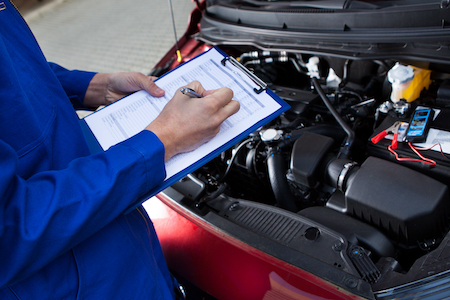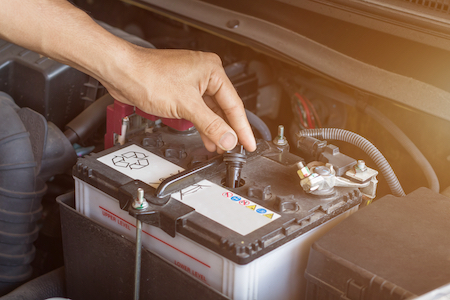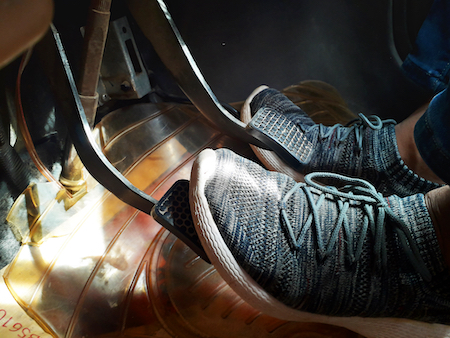Summertime is fun time. Check out a baseball game. Hang out with friends by the pool. Head to the mountains and take in the sights.
No matter what you choose to do after work, there’s one thing you should avoid … car problems. And in the summertime, that often comes in the form of AC problems.
No worries; we have some troubleshooting advice for you.
With summer in full swing, there’s nothing more important than a properly functioning air conditioning system in your car. We all know how uncomfortable it can get when that cool breeze suddenly turns into warm, stale air. But fear not, because I’ve got advice for you. Pay attention to some common car AC problems and their solutions, and it’ll be like having an experienced auto mechanic tucked in right there beside you.
Weak or Warm Airflow
You’re cruising down the road, expecting that refreshing chill from your AC, but all you’re getting is a weak puff of lukewarm air. What’s going on?
Warm air could be due to several reasons.
One common culprit is a refrigerant leak. Your AC system relies on refrigerant to cool the air; if it leaks, you won’t get that icy blast you’re hoping for.
Another possibility is a clogged cabin air filter. Imagine this filter as the lungs of your AC system – if it’s clogged with dirt and debris, the airflow will be restricted.
Solution: If you suspect a refrigerant leak, it’s time to visit a professional mechanic. They’ll diagnose the issue, fix the leak, and recharge the system. For a clogged cabin air filter, you might even be able to tackle this one yourself! Check your car’s manual for the location of the filter and either clean or replace it as needed.
AC Blowing Cold on One Side, Warm on the Other
Ever been in a car where one side feels like the Arctic while the other is basking in the Sahara? This could be a case of temperature imbalance. It’s likely that your car has a dual-zone climate control system, and if the blend door actuator (the device that controls the temperature) malfunctions, it could lead to uneven cooling.
Solution: A visit to the mechanic is in order. They’ll diagnose which blend door actuator is misbehaving and replace it if necessary. This will ensure that everyone inside the car can enjoy the same comfortable temperature.
Unpleasant Odors
Nothing ruins a pleasant drive like a foul smell wafting from your vents. This could be a sign of mold or bacteria growth in your AC system. Moisture can accumulate in the system, creating a breeding ground for these unwelcome guests.
Solution: Start by running your AC on high for a few minutes to dry out the system. If the smell persists, consider using an AC cleaner to eliminate the odor. In severe cases, a professional cleaning might be necessary to remove mold and bacteria from the system.
Strange Noises
Your car’s AC should be humming along quietly, but if you hear rattling, hissing, or other strange noises, it’s time to investigate. These noises could indicate anything from a worn-out compressor to a loose belt.
Solution: Again, a trip to the mechanic is in order. They’ll diagnose the source of the noise and make the necessary repairs. Ignoring unusual noises could lead to more significant problems down the road.
AC Not Blowing Cold Air
So, you turn on your AC, adjust the temperature dial, and wait for the frigid air to rush in. Except, it doesn’t. Your AC is blowing, but it’s just not cool. What’s the deal?
The first thing to check is your compressor – it’s the heart of your AC system. If it’s malfunctioning, your AC won’t be able to produce cold air.
Another possibility is a faulty condenser or evaporator, which are responsible for removing heat and moisture from the air.
Solution: Time to call your trusty mechanic! They’ll perform a series of tests to determine the exact cause. If it’s a compressor issue, they might need to replace it. For problems with the condenser or evaporator, repairs might involve fixing leaks or replacing components.
AC Cycling On and Off
You’re driving along and notice your AC cycling on and off more frequently than usual. Sometimes it’s hot. Sometimes it’s cold. What’s the deal?
This can be frustrating, and it might even indicate an underlying issue. One common culprit is a refrigerant leak, which can lead to improper pressure levels in the system, causing the AC to cycle on and off.
Solution: Yep, you guessed it – a visit to the mechanic is necessary. They’ll inspect the AC system, identify any leaks, and address the problem. Don’t delay this repair, as refrigerant leaks can also harm the environment.
Electrical Issues
Sometimes, your car’s AC might not be working due to electrical gremlins. Fuses, relays, and wiring can all play a role in the proper functioning of your AC system. If any of these components fail, it can lead to a complete AC shutdown.
Solution: While some basic electrical troubleshooting can be done at home, like checking fuses, it’s best to consult a mechanic for more complex issues. They have the tools and expertise to diagnose and repair electrical problems effectively.
The secret to troubleshooting your car’s AC problems
Notice anything similar about each of these troubleshooting methods? They all involve paying attention to how your car is behaving.
And that’s really the key to keeping your car well-maintained. Troubleshooting car AC problems doesn’t have to be a daunting task. Pay attention to how your car behaves each day, and take action when something goes astray. It’s the best way to ensure a comfortable and cool ride all summer long.
Remember, while some minor issues can be tackled on your own, it’s always a good idea to consult a professional mechanic for more complex problems. Regular maintenance and prompt repairs are key to keeping your car’s AC running smoothly and efficiently.
Stay cool out there!










